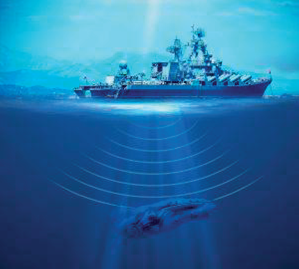The great challenge of propeller cavitation in shipbuilding. Continuous control with the innovative Non-Intrusive Cavitation Detection System (Ni-CDS)
DOI:
https://doi.org/10.25043/19098642.239Keywords:
Cavitation, Monitoring, Efficiency, URN, Noise, VibrationsAbstract
Cavitation is an unwanted phenomenon that has been present for more than 50 years in any ship propulsion system. Despite the great technological advances with the use of advanced simulation tools (CFD's), and new technology, we are still far from being able to eliminate it from propellers due to its own operating principle. This phenomenon will continue to occur under certain conditions of operation of the propulsion system of ships.
The consequences of this phenomenon are well known to the Navies, shipowners and naval engineers: reduction of the service life of the propeller and sometimes of the rudder and hull too, reduction of propulsive efficiency, a significant increase in vibrations and noise on board and, consequently, a reduction in comfort conditions and stealth capacity, together with noise pollution with negative effects on the oceans and marine fauna. This issue has been on the table at the IMO since 2008, currently working on updating MEPC.1/Circ.833. For this purpose, a working group of more than 120 experts from 40 entities (countries and organizations) from all over the world has been created, being TSI one of its most involved members.
After more than 5 years of research, TSI has developed the first non-intrusive system capable of automatically and continuously detect this phenomenon and quantify its intensity, with sufficient precision to provide valuable information for its control. By having a visible and real time indicator of this phenomenon, we can act and reduce the negative effects of cavitation and control the acoustic signature of our vessel at all times.
Downloads
References
JOHAN BOSSCHERS. (2018). Propeller tip- vortex cavitation and its broadband noise. PhD thesis, Maritime Research Institute Netherlands.
J. M. ARROYO ROSA. (2018). Cavitación. Temarios formativos.
R AÚL MIGUEL SAN FRUTOS. (2016). Cavitación en hélices. https://conbdebarco.wordpress.com/
Escuela Técnica Superior de Ingenieros Navales. (2016). Propulsión del buque C8.- Cavitación.
Wikipedia, la enciclopedia libre (2017). Cavitación. https://es.wikipedia.org/wiki/Cavitación.
SANDRO IANNIELLO. ANDREA DI MASCIO. Hydroacoustic characterization of a marine propeller through the acoustic analogy.
SANDRO IANNIELLO. The underwater noise prediction from marine propellers: An essentially nonlinear problem.
SANDRO IANNIELLO. Sheet cavitation noise prediction from a marine propeller.
Entregables del proyecto europeo SILENTV Project.
Entregables del proyecto europeo AQUO Project.
Entregables del proyecto europeo SATURN Project.
PUBLIO BELTRÁN. et al. (2012). Achievement of the new URN requirements. ECUA
PUBLIO BELTRÁN. La Construcción Naval Española preparade para responder a los nuevos y exigentes requerimientos medioambientales. Nuevos retos y oportunidades.
PUBLIO BELTRÁN. (2008). Buque Oceanográfico Miguel Oliver: La excelencia en ruido y vibraciones a bordo cumpliendo ICES nº109

Published
How to Cite
Issue
Section
License
Copyright (c) 2023 Cotecmar

This work is licensed under a Creative Commons Attribution 4.0 International License.
The authors who publish in this Journal certify that:
- The work submitted for publication in The Ship Science and Technology journal, was written by the author, given that its content is the product of his/her direct intellectual contribution.
- All data and references to material already published are duly identified with their respective credits and are included in the bibliographic notes and quotations highlighted as such.
- All materials submitted for publication are completely free of copyrights; consequently, the author accepts responsibility for any lawsuit or claim related with Intellectual Property Rights thereof, Exonerating of responsibility to The Science and Technology for the Development of Naval, Maritime, and Riverine Industry Corporation, COTECMAR.
- In the event that the article is chosen for publication by The Ship Science and Technology journal, the author state that he/she totally transfers reproduction rights of such to The Science and Technology for the Development of Naval, Maritime, and Riverine Industry Corporation, COTECMAR.
- The authors retain the copyright and transfer to COTECMAR the right of publication and reproduction of the work which will be simultaneously subject to the Creative Commons Attribution License (CC -BY) , which allows the license to copy, distribute, display and represent the work and to make derivative works as long as it recognizes and cites the work in the manner specified by the author or licensor.
- For more information about the Creative Commons Attribution License (CC -BY) and his use and scope, please visit the following web page https://creativecommons.org/licenses/by-sa/4.0/legalcode








